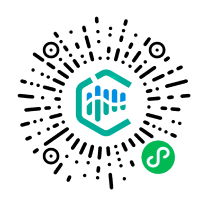

18983288589(微信同号)

18983288589(微信同号)

18908392210(微信同号)

18980413049


2019-09-27
FDA-2017-D-6569
指导原则
美国
现行有效
/
美国食品药品监督管理局(FDA)
GUIDANCE DOCUMENT
Not for implementation. Contains non-binding recommendations.
The Food and Drug Administration (FDA) has long regulated software that meets the definition of a device in section 201(h) of the Federal Food, Drug, and Cosmetic Act (FD&C Act), including software that is intended to provide decision support for the diagnosis, treatment, prevention, cure, or mitigation of diseases or other conditions (often referred to as clinical decision support software). This guidance provides clarity on the scope of FDA's oversight of clinical decision support software intended for health care professionals, patients, or caregivers.
FDA recognizes that the term "clinical decision support" or "CDS" is used broadly and in different ways, depending on the context. CDS provides health care professionals (HCPs) and patients with knowledge and person-specific information, intelligently filtered or presented at appropriate times, to enhance health and health care.1 In the Food and Drug Administration Safety and Innovation Act (FDASIA) Health IT Report of 2014, CDS is described as a variety of tools including, but not limited to: computerized alerts and reminders for providers and patients; clinical guidelines; condition-specific order sets; focused patient data reports and summaries; documentation templates; diagnostic support; and contextually relevant reference information.2
The purpose of this guidance is to describe FDA's regulatory approach to CDS software functions. The agency's approach includes recent changes to the FD&C Act made by the 21st Century Cures Act (Cures Act), which amended section 520 and excludes certain software functions from the device definition. This guidance clarifies the types of CDS software functions that: (1) do not meet the definition of a device as amended by the Cures Act; (2) may meet the definition of a device but for which, at this time and based on our current understanding of the risks of these devices, FDA does not intend to enforce compliance with applicable device requirements of the FD&C Act, including, but not limited to, premarket clearance and premarket approval requirements; and (3) meet the definition of a device and on which FDA intends to focus its regulatory oversight. In its risk based approach to CDS regulation, FDA also intends to leverage the Software as a Medical Device: Possible Framework for Risk Categorization and Corresponding Considerations (IMDRF Framework).
1See Office of the National Coordinator for Health Information Technology, "What is Clinical Decision Support (CDS)?" at https://www.healthit.gov/topic/safety/clinical-decision-support.
2 FDASIA Health IT Report, April 2014, available at https://www.fda.gov/about-fda/cdrh-reports/fdasia-health-it-report.
You can submit online or written comments on any guidance at any time (see 21 CFR 10.115(g)(5))
If unable to submit comments online, please mail written comments to:
Dockets Management
Food and Drug Administration
5630 Fishers Lane, Rm 1061
Rockville, MD 20852
All written comments should be identified with this document's docket number: FDA-2017-D-6569.

Pharma CMC2024-10-15

摩熵医药(原药融云)2024-08-21
数屿医械2024-06-24
数屿医械2024-06-13
数屿医械2024-05-30
摩熵医药(原药融云)2024-05-27
药事纵横2024-02-28
药通社2023-12-26
摩熵医药(原药融云)2023-12-13
药通社2023-06-25
2024-11-15
2024-11-14
2024-11-01
2024-10-31
2024-10-30
2024-10-30
2024-10-30
2024-10-29
2024-10-28
2024-10-24
2024-10-24
2024-10-23
2024-10-23
2024-10-22
2024-10-21
2024-11-15
2024-11-14
2024-11-01
2024-10-31
2024-10-30
2024-10-24
2024-10-22
2024-10-21
2024-10-17
2024-10-17
2024-10-17
2024-10-17
2024-10-17
2024-10-16
2024-10-15
2024-11-14
2024-11-01
2024-10-31
2024-10-30
2024-10-30
2024-10-24
2024-10-22
2024-10-21
2024-10-17
2024-10-17
2024-10-17
2024-10-17
2024-10-17
2024-10-16
2024-10-15